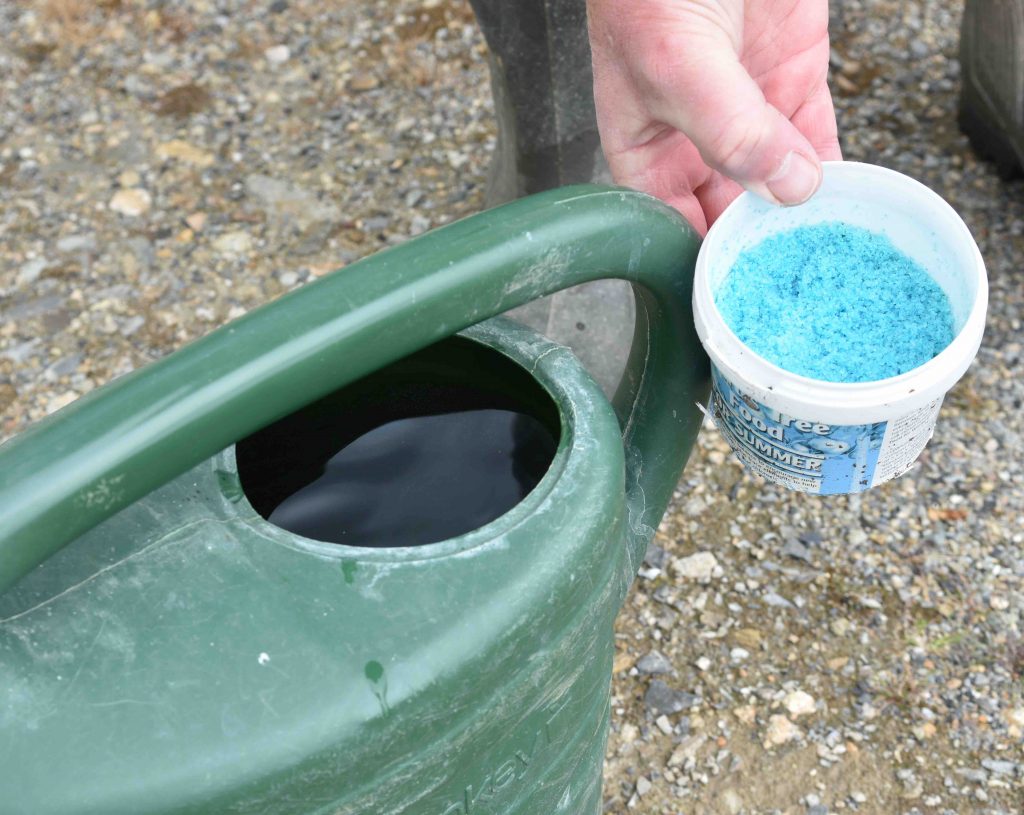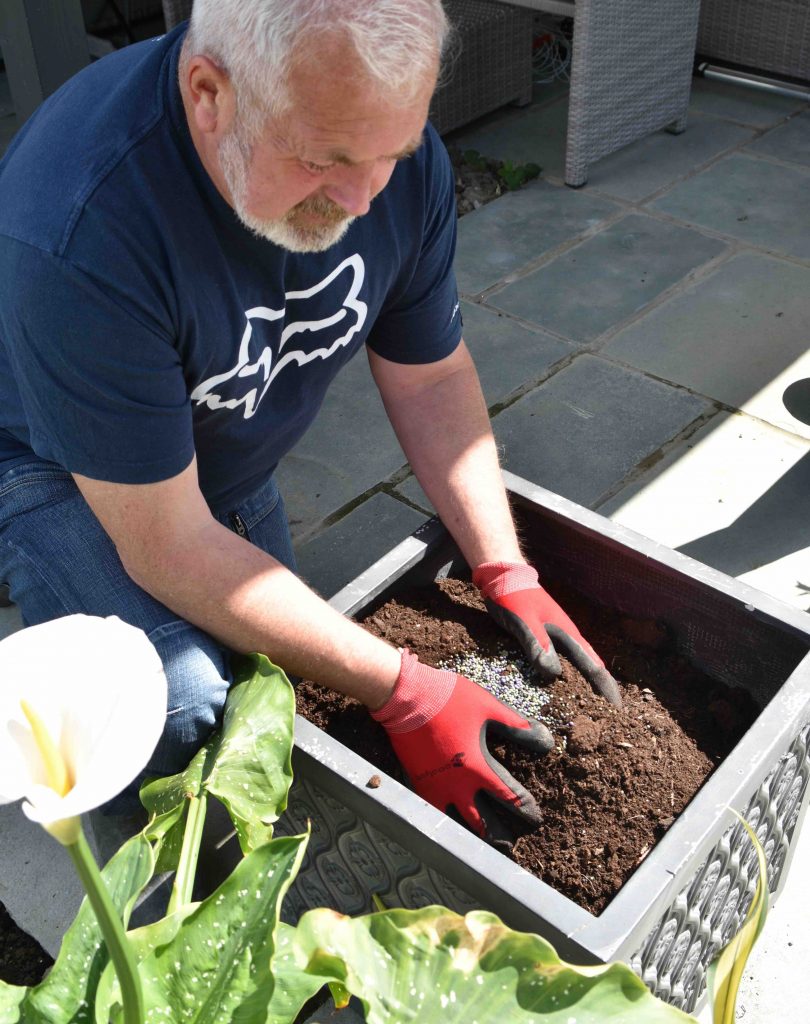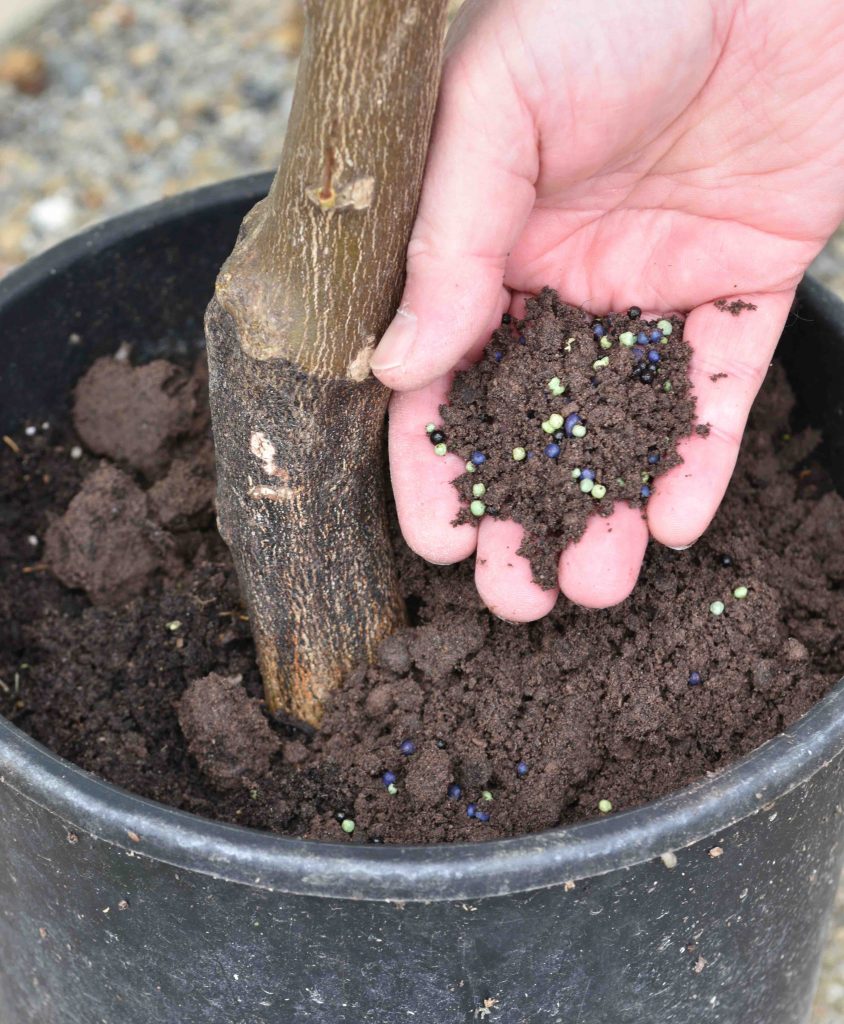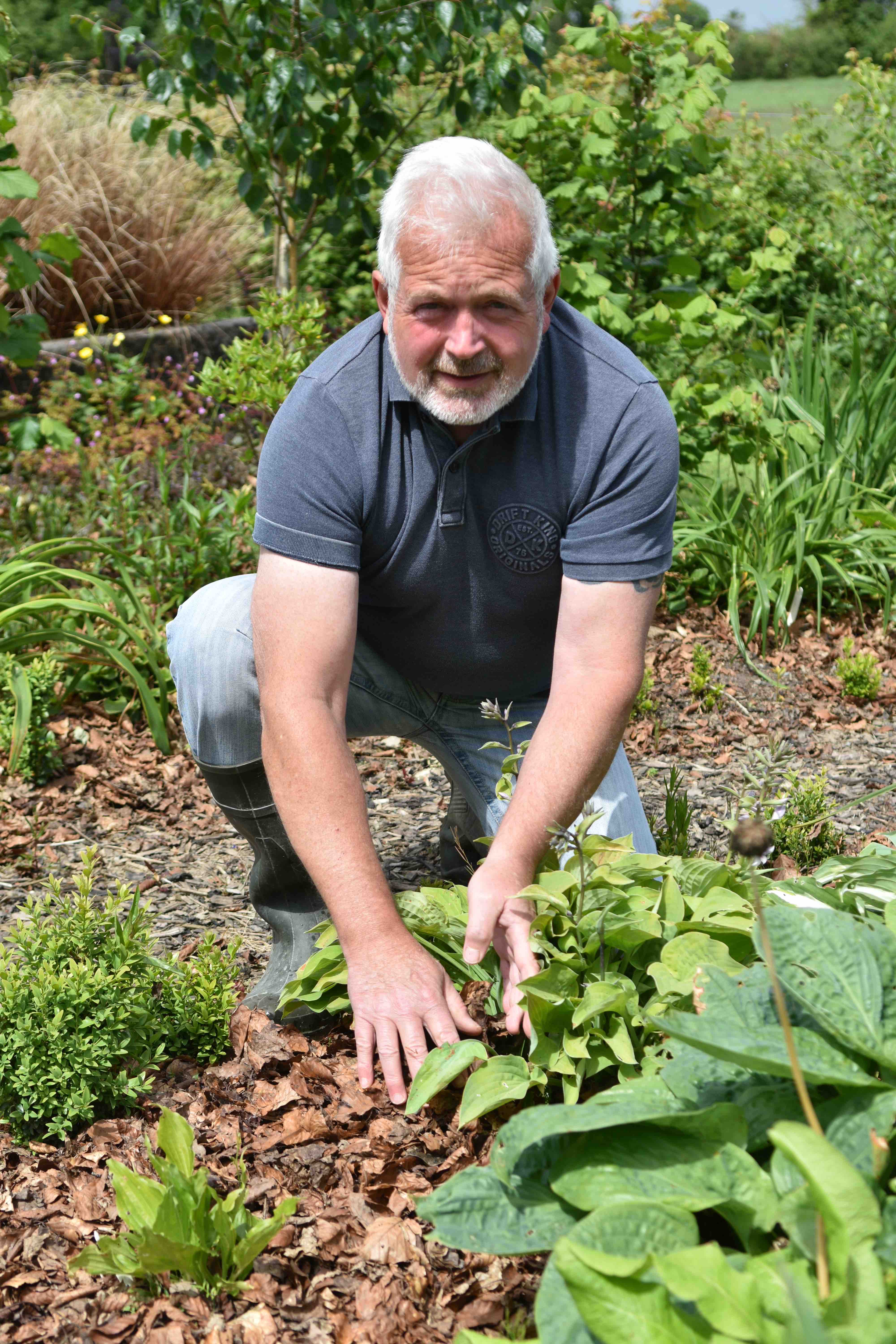
Most plants in our gardens benefit from extra feeding to keep them healthy and growing and flowering well. It is especially important to feed plants in containers because these rely on us for all their nutrients. Most plants in pots are planted in multipurpose compost and this contains limited nutrients, which will run out after a few weeks. And as plants get bigger they need more nutrients.
We can feed in various different ways and most fertilisers contain a range of essential nutrients. The most important are: nitrogen, phosphorus and potassium (potash). These are needed for leaf and stem growth, root growth and flowers and fruits, respectively. All fertiliser contains all three, in various proportions. Lawn fertiliser is high in nitrogen because grass is leafy and tomato fertiliser contains more potassium, to encourage flower and fruit.
You can apply fertilisers as granules or as liquid. If they are dissolved or diluted they act quickly but need to be applied regularly. Powders and granules have to break down to release the nutrients and organic fertilisers may take a long time to release their nutrients, but not always. Organic fertilisers contain a broad range of nutrients and, as well as providing nutrients, they also encourage bacteria and fungi so add to soil health.
Although you can buy a range of fertilisers to suit all your plants, you do not need a different fertiliser for every plant.
In the borders, a general fertiliser to sprinkle on, is best. You can use fish, blood and bone, chicken pellets or growmore. All provide the nutrients most plants need. For flowering shrubs you may prefer to use a rose fertiliser, which has a higher proportion of potassium. You can use this for all flowering shrubs and perennials including climbers like clematis.
Fish, blood and bone, chicken pellets or growmore can be used on the veg plot and around fruit. Feeding is important because we expect a lot of our crops.
In pots use a liquid fertiliser, applied every week, or you can add a controlled-release fertiliser at planting time.

When you have shrubs, including fruit, in pots, you can top dress every spring by scraping away some of the top soil in the pot and replacing it with some fresh John Innes compost and a little controlled release fertiliser.

There are many liquid fertilisers and you can choose your favourite and buy as many as you like but, for most purposes, a good tomato fertiliser is adequate and any feeding is better than none.
Mulching can also add some nutrients to the soil and then the plants – but not always. Bark adds nothing to the soil while manure, leaf mould and garden compost adds small amounts of nutrients but are largely spread to maintain soil moisture and improve the soil.

Weekly jobs
Pick broad beans and pull up and compost the plants. Dig over the patch and replant with cabbage or other leafy crops to use the nitrogen the beans have added to the soil.
Deadhead bearded iris by snapping off the stems from the rhizomes. If they are getting crowded they can be dug up and replanted next month.
Keep weeds under control by hoeing among plants regularly.